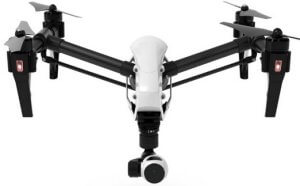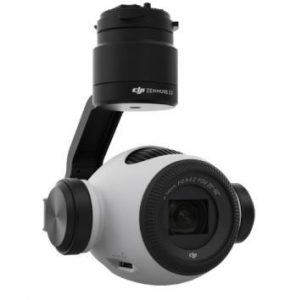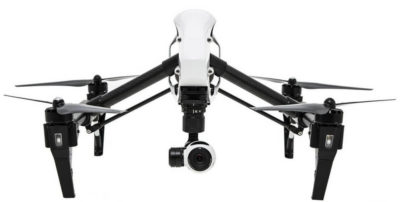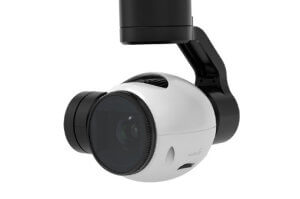This updated DJI Inspire 1 drone review takes a close look at the features, design, gimbal and camera options on both the Inspire Standard and Professional models.
The Inspire 1 has entered new territory in drone innovation, sleek design and patented motor and gimbal engineering. The Inspire 1 drone is very versatile with various cameras and sensors options.
In this Inspire 1 review, we take a full look at its design, intelligent flight modes, gimbals and many camera options, along with a number of top Inspire 1 videos. We answer the many frequently asked questions such as the Inspire 1 range, distance, max height, altitude, frequency, sensors, transmission, WiFi, gimbal, camera and much more.
The DJI Inspire 1 is very close to the perfect quadcopter. The Inspire 1 allows anyone to create great aerial photography and filming shots. There are a number of cameras which can be fitted to the Inspire 1.
The latest camera is the Zenmuse Z3 which is the first integrated aerial zoom camera optimized for still photography. Being able to detach the gimbal on the Inspire 1 allows this drone to be used for more than just aerial filming.
For example, the Inspire 1 Pro comes with the Zenmuse X5 gimbal and 4k micro four thirds camera. This Zenmuse X5 gimbal can be removed and the new Zenmuse XT thermal imaging sensor can be attached giving the Inspire 1 real flexibility to provide solutions in many different sectors.
Fire Departments use drones to get an overall view of the area where they are battling a blaze whether it is a building or a forest. They are also using thermal vision cameras to get information on the heat of a fire or the heat from a fire which has just been put out.
Or, how about attaching the latest Parrot Sequoia multispectral sensor for farming allowing the Inspire 1 to capture both visible and invisible images of crops, vegetation and ground cover.
The Inspire 1 is designed with adaptability in mind.
The Inspire 1 is easy to fly, very responsive to your touch and a pleasure to fly. The Inspire 1 is leaving many other expensive drones way behind when it comes to flying capabilities, stabilization, creating professional aerial filming, photography, photogrammetry and thermal imaging.
DJI Inspire 1 Review
Inspire 1 And Inspire 1 Pro
The Inspire 1 drone Standard and Professional models vary in the gimbal and camera options. The Inspire 1 drone uses the Zenmuse X3 gimbal and camera.
The Inspire 1 Professional uses the Zenmuse X 5 gimbal and camera. The Inspire 1 Pro also has 2 models which are the Zenmuse X5 or the X5R. The Zenmuse X5R is more powerful and its major benefit is that it has a Max Video bit rate of 2.4 Gbps.
DJI Inspire 1 Weight
The Inspire 1 is easy to carry, weighing slightly less than 7 lbs (2935 grams).
DJI Inspire 1 Flight Time
The Inspire 1 has a maximum flight time of 18 minutes.
DJI Inspire 1 Max Speed
It is powerful and flies at a speed of 72 feet (22 meters) per second.
DJI Inspire 1 Maximum Transmission Distance
Up to 3.1 miles (5 km).
DJI Inspire 1 New Propeller Design
The Inspire 1’s has a new quick release 13 inch rotor and propulsion system. It is called the Z-Blade. These rotors are enforced with a carbon fiber compound for extra strength and stability. They are strong and light helping to increase efficiency while saving power.
Inspire 1 Advanced Motors
There is no doubt that DJI are real innovators. The brushless motors used across the multirotor industry were designed by DJI. The Inspire has 2 new innovations built into the motors.
 The Inspire uses newly designed integrated curved magnets which fit perfectly around each motor. This new curved magnet stops air flowing within the motor which increase the motors effectiveness .
The Inspire uses newly designed integrated curved magnets which fit perfectly around each motor. This new curved magnet stops air flowing within the motor which increase the motors effectiveness .
Another development is that DJI are now using thicker strands of copper in the Inspire’s brushless motor.
This reduces wasted space between the copper strands and allows for more copper to be used in each motor. This provides a lot more power and a lot less resistance. Amazing innovation.
Revolutionary ESCs
The Inspire 1 uses ground braking sinusoidal drive electronic speed controllers which replace the more square wave drive of traditional ESCs. Every other multirotor uses square wave drive ESC’s. It actually means that DJI have redesigned the whole drive system. DJI have also patented the algorithm in their new ESCs.
The new ESCs have features such as closed loop torque control and distinct functional redundancy which also adds efficiency and reliability.
Sleek And Maneuverable
Carbon fiber is an extremely strong and light fiber-reinforced polymer material. The Inspire 1 arms are made from Carbon Fiber which make this drone extremely light while at the same time giving it extra strength.
The arms also transform, moving out of the camera’s way. All you need to do is flick the switch and the 4k camera has a full 360⁰ aerial view.
The Inspire 1 has been used to film the World Rally Championship which proves just how maneuverable this quadcopter is. Filming fast action is difficult and the Inspire 1 is well up for this action.
Here is a short aerial video from the World Rally Championships filmed using both Inspire 1 and Phantom 4 quadcopter.
 Inspire 1 Adaptable Design
Inspire 1 Adaptable Design
The integrated gimbal and camera are removable. The camera from the Inspire 1 can fit into a new handheld gimbal called the OSMO.
DJI are cooperating and developing new integrated gimbal sensors to fit the Inspire 1. The first of these is the Zenmuse XT integrated gimbal and thermal imaging sensor (more on the Zenmuse XT below).
This shows how DJI are serious about moving the Inspire 1 outside the realm of the aerial cinematography and photogrammetry.
With the Inspire 1 we now have 2 different gimbals and cameras for aerial cinematography. Currently, there are three prime lenses compatible with the Zenmuse X5R.
Add the Zenmuse XT thermal imaging sensor and we are starting to see a professional quadcopter, which is highly flexible and can cover a multiple of sectors.
DJI Inspire 1 Intelligent Flight Modes
The Inspire has the following terrific intelligent flight systems as follows;
- Waypoint navigation – Set multiple GPS points and the Inspire 1 will fly to them automatically.
- Points of Interest – can be enabled to take off from a moving position.
- Follow Me – Track a moving subject and film at the same time.
- Course Lock – This mode allows you to fly in a set direction as you fly alongside moving objects or across scenes.
- Home lock – Fix your controls to be relative to the Home Point.
- Dynamic Home Point – Allows the Inspire 1 to have a home point which is different from the takeoff home point.
DJI Inspire 1 Go APP
The DJI GO app gives you complete control of your camera and a live HD video feed right on your screen. Here are just some of the features of the DJI Go App.
- You can easily adjust camera settings and use this real-time view to line up the perfect shot.
- The live video stream from your camera is automatically saved on your mobile device for easy preview and editing later.Use this video as a reference, and download the full quality videos and photos with a few taps.
- Create professional movies in minutes using the DJI Director video editor.With a wide variety of pre-designed templates, it is easy to pick one that suits you best and make a new video to share.
- All of your photos and videos, which were shot using a DJI product and the GO app are stored in one place, making it easy to browse, share, and send your footage anywhere you like
- Share your best work on SkyPixel, a dedicated platform for aerial photographers and filmmakers from around the world.The GO app also connects to your Facebook, Twitter, and Tumblr accounts for quick posting.
- See yourself or your flight platform on a live map, and log exactly where you are filming.
- Every moment is an experience to remember. DJI GO records data on each of your shoots and flights, ready for your review later.
Download the Inspire 1 Go App from Google Play. For Apple devices, you can also find the DJI Go App in iTunes.
DJI Inspire 1 Interactive Flight Simulator
Practice flying and perfect your skills anywhere. The included flight simulator gives you the lifelike experience of flying your Phantom 3 in a safe, controlled virtual environment.
DJI Inspire 1 Price
When it comes to buying anything, price is very important. For the price, you are getting a top class filming drone. The Inspire 1 is also very versatile.
The Inspire 1 can be used for professional filming, creating 3D maps and models of structures. To create 3D maps or models, all you need is the Inspire 1 quadcopter, along with a top photogrammetry software application.
The Zenmuse XT Thermal sensor can be mounted on the Inspire 1. This allows the Inspire 1 to be used for inspecting electrical power lines and industrial chimney stacks etc. Thermal is used for search and rescue missions at night. There is also the Zenmuse Z3 with a 7 x optical zoom lens, which has many great uses including telecommunications and mast inspections.
There is more information on the Inspire 1 gimbal and camera options below.
The Inspire 1 is now available now so please check the DJI Inspire page here.
DJI Inspire 1 Drone Review – Cameras Options
Gimbals – Zenmuse X3, X5, X5R, Z3, XT
DJI’s have years of expertise in gimbal component design and stabilization with their Zenmuse range. The gimbal and camera are integrated on the Inspire 1 so no looking for supporting cameras. The 4k camera on the Inspire 1 gets a lot of attention and it is DJI’s most advanced camera to date.
For professional aerial photography you have 3 choices of integrated gimbal camera. These are the Zenmuse X3, X5, Z3 (Zoom).
DJI have designed the Inspire 1 to move beyond the world of aerial filming. The Zenmuse XT is an integrated gimbal / thermal imaging camera. More the XT below.
Ad: Check out this superb DJI Mavic 2 Pro deal on Amazon.
Zenmuse X3 (Inspire 1 Standard)
The Zenmuse X3 is a 3-axis gimbal which constantly pulls in data from the flight controller every millisecond. It draws in data such as angular velocity, momentum and even inertial force. This intelligent gimbal also draws in GPS data to keep the camera perfectly stabilized.
The Zenmuse X3 gimbal has an ultra-fast, custom-made processor. You won’t see this stabilization technology in any other gimbal on the market. The DJI Zenmuse gimbals are miles ahead of the competition. The X3 gimbal is able to re-compensate for the slightest movements and tilt in real time.
Zenmuse X3 Camera
The new camera is called the X3 and the model is the FC350. The Inspire 1 X3 camera has an astonishing 9-layer lens which will always capture the very best aerial views.
The X3 camera has a curved rectilinear lens which eliminates distortion. It has a focal length of 20 mm which allows for wide angle shots without that fish-eye look.
This compact aerial camera shoots video up to 4k p30 or 1080 p60 and takes professional quality 12 megapixel stills. The Inspire 1 camera has a full 360 degree range.
The Inspire 1 software app will allow you to rotate and tilt the camera. All you need to do is tap the screen and drag your finger wherever you want to look. The Inspire 1 app responds immediately to your touch, giving you tremendous control.
Here’s a brief overview of the Inspire 1 X3 FC350 camera.
- Video: 4k @ 24-30 fps, or 1080p @ 24-60 fps
- Photos: 12 Megapixels
- Lens: 9 elements in 9 groups including an aspherical element
- 1/2.3 inch CMOS sensor
- 94⁰ wide angle FOV
- 3-axis, 360⁰ rotating gimbal
Zenmuse X5 Gimbal (Professional)
The Zenmuse X5 gimbal is fully integrated with the camera. It is a 3-axis gimbal which is able to totally stabilize your camera in flight. This gimbal communicates constantly with the aircraft flight systems as you fly and the powerful brushless motors instantly respond to all minor movements to keep the camera level, even when capturing long exposure or time-lapse content.
Zenmuse X5R Camera (RAW)
The Zenmuse X5R is a Micro Four Thirds aerial camera capable of recording lossless 4k UHD videos in RAW. The X5R has a frame rate of up to 30 fps with 1.7 Gbps being the average bitrate. However the Zenmuse X5R has a maximum 2.4 Gbps bitrate. You will have no problem shooting professional video every time.
For photos the X5 has a powerful MFT sensor which allow you to take 16 MP images with stunning details. The integrated 3-axis stabilization gimbal keeps the camera level.
Innovative Camera
The Zenmuse X5R uses the most innovative and powerful Micro Four Thirds sensor, which really sets new heights when it comes to aerial cameras. The sensor is eight times the size of the Zenmuse X3 camera included with the Inspire 1. This new MFT sensor enables high quality, high sensitivity image recording at an ISO range of 100-25600.
This camera is highly sophisticated and with its balance and accurate gradation you will take professional photos and aerial filming every time.
Lets take a quick look at the Zenmuse X5 gimbal and camera a little closer.
Here is a quick review of the Zenmuse X5R gimbal camera.
Inspire 1 – Film Professionally
Here’s a terrific video which shows you the real quality of the Inspire 1. It is totally awesome.
Zenmuse Z3 Camera (Zoom)
 The latest gimbal and camera is the Zenmuse Z3. This features an optical zoom lens and it is the first time that DJI have integrated zoom on their cameras. The Zenmuse Z3 provides a 3.5 optical zoom and 2 x digital zoom.
The latest gimbal and camera is the Zenmuse Z3. This features an optical zoom lens and it is the first time that DJI have integrated zoom on their cameras. The Zenmuse Z3 provides a 3.5 optical zoom and 2 x digital zoom.
The Type 1/2.3 CMOS sensor supports 4k video recording and 12 MP still photos. As with other DJI 3-axis gimbal systems, the Zenmuse Z3 can be mounted onto a DJI aircraft* and stream live HD video to the DJI GO app.
The Zenmuse Z3 was designed for the Inspire 1 series, Matrice 100 and Matrice 600 drones.
Zenmuse XT Thermal Imaging Camera
In early December 2015, DJI announced the Zenmuse XT thermal imaging sensor. The thermal imaging sensor is from FLIR, which are world leaders in thermal imaging systems, visible-light imaging systems, locator systems, measurement and diagnostic systems, and advanced threat detection systems.
The Zenmuse XT provides accurate temperature measurements ideal for analytics and telemetry. The Zenmuse XT thermal camera provides image and video details which the naked eye could never spot by making subtle differences in temperature visible.
This allows the Inspire 1 to be used outside the world of aerial filming. Thermal images can reveal whether equipment or buildings are damaged and assist with with rescue missions.
Multispectral Imaging
The Inspire 1 really is expanding into many different sectors. Its design allows for new innovative uses. Precision farming is big business. It saves farmers time and money. You get a bigger yield from your crops while at the same time reducing the amount of water, sprays and fertilizers which need to be used.
Precision farming uses multispectral sensors mounted on unmanned aircraft including drones. These remote sensors use Green, Red, Red-Edge and Near Infrared wavebands to capture both visible and invisible images of crops. This data is then processed and the health and vitality of the crops and plants can be assessed.
The latest Parrot Sequoia multispectral imaging sensing system can be added to the Inspire 1 making it the perfect for precision farming.
This multispectral remote sensing technology can also be used for golf course maintenance.
Inspire 1 Drone Review – Flight Systems
Intelligent Flight Control System
Hover Indoors
You can take off and land at the press of a button and keep your Inspire 1 steady indoors or when GPS satellites can’t be acquired with the new DJI Vision system.
DJI built a new vision positioning system which combines visual data and sonar waves in one unit. This positioning system can detect both variance patterns on the ground and current altitude. With this system, the Inspire 1 can hover in place and automatically raise or lower its arms as you liftoff or descend to the ground.
Processing this information is accomplished by a dedicated CPU chip. This chip takes in and outputs data in real-time. It is also intelligent enough to distinguish between objects and ground patterns.
2 KM First Person View
The Inspire 1 Remote Control can be singular or dual operator. There are now dedicated buttons to control both flight and camera functions on the controller. There are buttons for photo and video capture, dials for gimbal tilt movement and camera settings. There is also a “Return to Home” button.
What is unique about this controller is the integrated Lightbridge. This gives you a live view of what your camera sees when connected to a screen or mobile device. You maximum control range is now up to a whopping 2 km.
This controller really is the brains of the Inspire 1. It receives thousands of bits of data every second and translates this data into flight movement. The Main Controller tells every part of your Inspire 1 what to do, calculates environmental conditions in real-time, and ensures that the aircraft responds to your control commands instantly.
Inspire 1 Positioning System
GLONASS / GPS
As you are flying the Inspire 1, the position is constantly updated and recorded using 2 high-strength satellite systems. The Inspire uses both GLONASS and GPS systems.
Using the GLONASS and GPS positioning, the Inspire 1 has excellent precision. The Inspire 1 will find more satellites and a lot quicker. Better than any other drone on the market. The 2 satellite systems will allow you to see where the quadcopter is on a live map and gives it a point to hover when you release the controls.
This dual positioning means that you are less likely to encounter no satellites anywhere you go. The Inspire 1 remembers its takeoff point and dynamically tracks your current position, so you can bring your Inspire 1 back to you at the press of a button.
Advanced IMU
The IMU keeps the Inspire 1 stable and steady during flight. The advanced Inertial Measurement Unit (IMU) handles everything and keeps the Inspire 1 steady with the IMU working hundreds of times every second. The IMU has both a 6-axis gyroscope and an accelerometer to monitor the tiniest of changes in all movement. This IMU allows the aircraft to compensate and adjust immediately, holding its position at all times. This really is incredible technology.
Intelligent Failsafe Technology
If the battery runs low or connection with your remote controller is lost, the Inspire 1 will use its dual positioning systems and smart flight technology to return back to you.
The below video shows you how to fly the Inspire 1 including calibrating the compass and a checklist before you take to the air. It is pretty easy to fly and terrific fun.
The DJI Inspire 1 Drone Package
When you buy the Inspire 1 you receive all of the following:
- Inspire 1 quadcopter (Best innovative drone on the market today. It is light and very strong).
- Integrated Zenmuse Gimbal / Camera / Sensor which was purchased.
- Dampers for the Zenmuse X3 gimbal unit.
- 1 battery and battery Charger as well as the connector for the controller and quadcopter.
- 1 Flight Controller which can hold your Smartphone or Tablet (Ports are Micro-USB, Mini-HDMI, CAN Bus, USB.
- A very nice exterior Case with zip which you can also add a lock.
- Harness shoulder strap for the case.
- 2 Micro USB Cords for the controller.
- Power Cable for the battery charger.
- 2 headed connector for the battery charger and also controller charger.
- 4 pairs of propellers so you have an extra set.
- Manual with Stickers and Warranty Information.
DJI Inspire 1 – More Information
You can find more information on the DJI Inspire 1 here.
There is no doubt that the Inspire 1 is one of the best professional drones on the market to date. DJI have designed this drone to be very adaptable with uses in professional aerial filming, 3D Photogrammetry, Thermal imaging. It can also be adapted for multispectral imaging and remote sensing.


